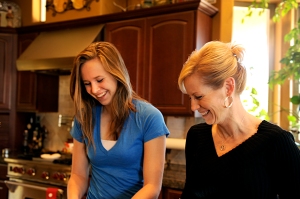
As a local coordinator who speaks to families about hosting exchange students, I find that there are certain questions I get quite often. Today’s post will address some of those FAQs (or Frequently Asked Questions).
1. Do host families get paid to host a student?
Host families are not paid. According the United States Department of State, host families cannot receive financial gain from their participation in a student exchange program. This rule is designed to ensure that host families are participating in the program for the right reasons. However, in recognition of their role as citizen ambassadors, all host families are eligible to receive a charitable tax deduction on their tax return.
2. Does the student need to have their own bedroom?
No. Students may share a room with a host sibling. However, special permission may be required depending on the age of that sibling.
3. What are the expectations of a host family?
Families are expected to provide room and board to their student, as well as reasonable transportation to school or extracurricular events. Families are also expected to include their student as a part of their family by including them in family trips, activities and meals, as well as typical household chores. Students come to learn about typical American family life and families are expected to share this with their student. In addition, students can share their culture and traditions with your family.
4. Do we have to have other children of similar age to our student?
No. Many of our host families have no children, adult children or young children. Some are single parents or same-sex parents. Some special permissions may be required in certain situations, but we are open to all different types of families.
5. What are the requirements of becoming a host family?
All adults living in the home must undergo a rigorous screening process, including a criminal background check. Additionally, families must meet with local representatives for an interview prior to being allowed to select and speak with a student. The interview must take place in the family’s home so that the representative can ensure a suitable, clean living environment will be provided. At least one adult host parent must be 25 years of age or older. Families should also expect to maintain monthly contact with their local representative and facilitate a secondary home visit by a different organization representative to ensure continued suitability.
6. What are the costs involved in hosting?
Host families are required to cover costs associated with at-home meals, any packed school lunches, transportation to reasonable social and extra-curricular activities, and shelter. Students bring their own pocket money to cover routine expenses including cell phone bills, school expenses, clothing and recreation such as trips to the movies. Students also are required to purchase approved health insurance valid in the United States.
7. Where do the students go to school?
Your local representative will work with you to enroll your student at the local public high school. This is contingent upon the school’s policies regarding enrollment of foreign exchange students, as these policies can vary.
What other questions would you have as a prospective host family? What about veteran families – what were your concerns prior to hosting?
Are you interested in finding out more about hosting a foreign exchange student? Fill out the contact form below and an EF representative will get back to you within 48 hours.











